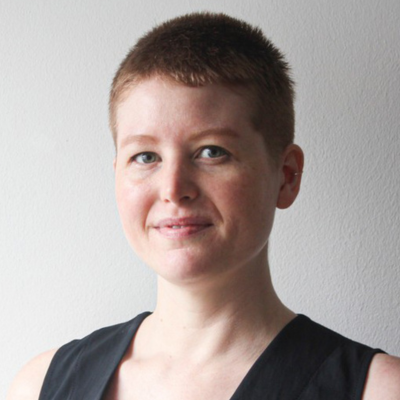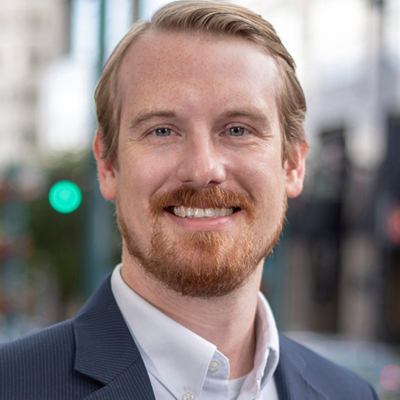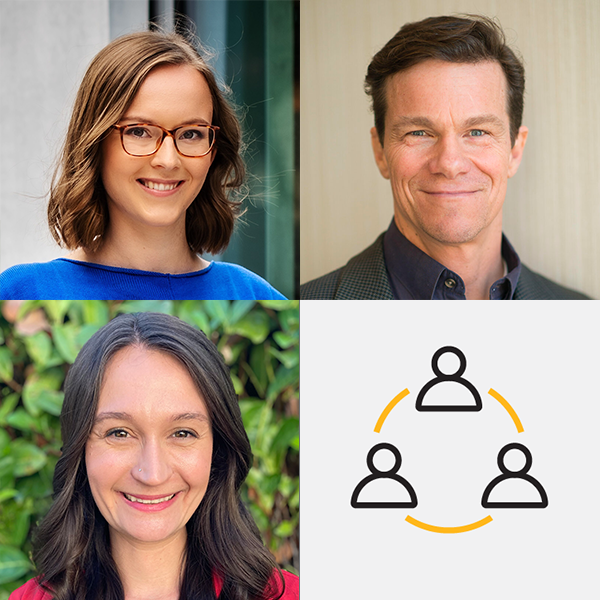¿Qué están haciendo usted y su empresa para ayudar a reducir las emisiones de carbono incorporadas?
Molly Eagen
Sustainability Analyst + Founder, Cause
In the Fall of 2005, I sat in a large seminar room, like thousands of other architecture students across the country, watching Ed Mazria’s live-streamed debut of the Architecture 2030 Challenge. Together, we learned the now-very-familiar statistics of the built environment’s massive contribution to global carbon emissions and climate change. Having this foundational understanding while in school, I never experienced architecture that wasn’t framed by this reality: We no longer have the luxury of opting in or out of striving for high performance, low carbon buildings. It is a compelling reminder that there are no ‘neutral’ buildings in today’s world. If your project is not pushing for solutions, it is a direct contributor to a worsening problem.
After working as both an architect and sustainability consultant, I have come to believe that a powerful catalyst for change is empowering architects to take greater ownership over building performance and carbon emissions analysis. A primary focus of my work today, through my consultancy, Cause, is creating customized tools and workflows to provide a pathway for architects to answer to the most essential sustainability questions without requiring the constant oversight of a specialized consultant. When you understand an issue, you can own it. You have the confidence to use that information as a creative design constraint, and, perhaps most importantly, you feel comfortable discussing critical sustainability-related decisions with your clients and guiding them to making informed, impactful choices.
I am deeply inspired by the many individuals in our profession who approach their work with a teaching mindset and push for transparency in order to collectively move our industry forward. As sustainability consultants, we have a critical role to play, leveraging our expertise to assist design teams in making sense of complex and ever-changing issues. However, in order for our work to scale to the level required, we need to expand our role to also be educators and increase performance and carbon fluency among architecture teams.

Molly Eagen
“After working as both an architect and sustainability consultant, I have come to believe that a powerful catalyst for change is empowering architects to take greater ownership over building performance and carbon emissions analysis.”
Tell us about your own personal motivation for addressing climate change in your personal career.
Joanna Zhang
Real Estate Development Senior Project Manager, Cushman & Wakefield
From extreme weather events to rising sea levels, we are experiencing the impact of climate change more vividly recently. To date, carbon emissions in the built environment are most directly related to building operations. Therefore, as a professional working in the building industry, I feel extremely obligated to address climate change by reducing both embodied carbon and operational carbon in our built environment.
¿Qué están haciendo usted y su organización para ayudar a reducir las emisiones de carbono incorporadas?
My mission to reduce embodied carbon started with my career as a structural engineer and project manager with SOM.
In most major projects, it takes approximately 20 years of operational life before operational carbon exceeds the carbon embodied in the original construction. A minimum acceptance goal for embodied carbon must be created to encourage a responsible approach to the environment. Collaborating with David Shook and several other SOM colleagues, we collected, understood, and standardized carbon data from over 200 projects, identified correlations, published research, and developed an advanced algorithm called the Environmental Analysis Tool™ that evaluates embodied carbon as well as cost benefits of carbon-friendly material systems and enhanced seismic force-resisting systems in buildings and infrastructures. The research was published as “Developing a Basis for Design-Embodied Carbon in Structures” at the American Society of Civil Engineers (ASCE) Architectural Engineering Institute (AEI) Conference and “A Proposal for Carbon Benchmarking of Structures” at the Structural Engineers Association of California (SEAOC) Convention. The Environmental Analysis Tool is free to be downloaded and used aquí. Given this tool, we can predict the embodied carbon of the built structure based on the input of key parameters and drive performance improvements.
My endeavor to reduce operational carbon continues with my AEI and Cushman & Wakefield work.
As the elected board of governors of AEI and co-chair of the 2023 AEI Conference, I worked with Travis St. Louise, Kristen Parrish, and the conference steering committee to organize a series of presentations and panel discussions about the most recent decarbonization goals and incentives in the country to encourage more actions to reduce carbon from government entities, companies, professional and individuals. $2.50-$5.00/sq. ft. tax credit for being 25%-50% more energy efficient against ASHRAE 90.1-2007 baseline is given for owners of commercial buildings as well as architects, engineers, and contractors of government or non-profit buildings per 179D. Up to 100% or $14000 of the energy project cost can be given as a tax rebate based on household income by the Home Energy Rebate Program, as presented by Joan Glickman of the Department of Energy at the Keynote Luncheon. Los Angeles is decarbonizing its power grid by 2035, as discussed by Paul Suk Lee of Los Angeles Mayor’s Office of Energy and Energy Sustainability at the Carbon Leadership Forum Opening Plenary. Denver is reducing the total commercial building energy use by 30% by 2030 by signing the Energize Denver Building Energy Performance Requirements into effect Jan 2022, as discussed by Celeste Cizik with Group 14 Engineering at Building Owners and Managers Association (BOMA) Keynote Luncheon.
After learning about the ordinances, such as the Energize Denver Building Energy Performance Requirements, which would require energy retrofits and might affect the real estate ownership cost and valuation, at Cushman & Wakefield, we are organizing information sessions with local property managers and brokers to help clarify the understanding of the ordinance, the retrofit strategies as well as the financial impact. As a result, we promote timely retrofitting of the energy system, complying with the ordinance, and meeting the carbon reduction goals.

Joanna Zhang
“A minimum acceptance goal for embodied carbon must be created to encourage a responsible approach to the environment. Collaborating with David Shook and several other SOM colleagues, we collected, understood, and standardized carbon data from over 200 projects, identified correlations, published research, and developed an advanced algorithm called the Environmental Analysis Tool™ that evaluates embodied carbon as well as cost benefits of carbon-friendly material systems and enhanced seismic force-resisting systems in buildings and infrastructures.”
¿Qué están haciendo usted y su empresa para ayudar a reducir las emisiones de carbono incorporadas?
Marwa Alshara
Architect, Reimagine Architects
My commitment and dedication to creating a healthier planet for all, with no one left behind, was shaped by my early travels around the world at a young age, where I studied and lived in various countries. With architecture as my chosen tool, I have embarked on a journey that has taken me from Syria to Jordan and is currently in Canada since 2016. Throughout this journey, I have remained curious and focused on discovering innovative methods to achieve sustainability through design.
As an architect and LEED AP BD+C-certified, I have gained expertise in sustainable design and worked on a wide range of projects – from small, high-profile initiatives to large-scale projects including LEED certified and net-zero buildings that have significantly contributed to reducing the carbon footprint of buildings and promoting sustainability. In addition to my LEED practices, my WELL AP certification and involvement in the WELL Advisory Board have enabled me to promote sustainable design practices that prioritize human health and well-being in the built environment.
I have been actively seeking innovative solutions to address embodied carbon through my pursuit of regenerative architecture. Taking a life-cycle approach to materials and systems used in building design through creating buildings with a net-positive impact on the environment. Recently, I was selected to be a Local Pathway Fellow with the UN. SDSN-cohort 2023, representing Edmonton among 100 young professionals from 80 cities worldwide, focused on SDG 11, Sustainable Cities and Communities. Target 11.a: Implementing integrated policies and plans towards inclusion, resource efficiency, mitigation and adaptation to climate change, resilience to disasters.
We, at Reimagine Architects, are dedicated to addressing operational and embodied carbon emissions in the building industry. Over the past decade, we have significantly reduced operational carbon. However, we recognize the pressing need to tackle embodied carbon in our design buildings. To achieve our goal, we take a comprehensive approach that prioritizes using low-carbon materials in our designs and employs a life-cycle assessment method.
To effectively reduce embodied carbon, it is crucial for the industry to collaborate and work together towards our common goal. As part of our commitment to reducing embodied carbon, we actively engage in regular workshops for all of our projects. These workshops bring together team members with diverse skill sets, including facilitation, building science, and sustainable design. Notable leaders in these workshops include Vivian Manasc, Mike Turner, and Robert Thornton. Together, we collaborate on researching and testing various tools that enable us to achieve environmentally responsible outcomes. Through our collaborative efforts, we not only assist design teams but also engage with our partners, suppliers, and industry organizations. This collaborative approach allows us to identify and implement best practices aimed at minimizing embodied carbon. Our ultimate goal is to ensure that our new construction projects stay below 500 kg CO2e/m2.
Our commitment to sustainable design aligns with the United Nations Sustainable Development Goals as a global framework, as we are working towards a sustainable and resilient future. Our goal is to create a sense of place that prioritizes human health and celebrates communities through transdisciplinary and multi-scalar collaboration that fosters a culture of sustainability and contributes to a healthier planet for all.
“We, at Reimagine Architects, are dedicated to addressing operational and embodied carbon emissions in the building industry. Over the past decade, we have significantly reduced operational carbon. However, we recognize the pressing need to tackle embodied carbon in our design buildings. To achieve our goal, we take a comprehensive approach that prioritizes using low-carbon materials in our designs and employs a life-cycle assessment method.”

¿Qué están haciendo usted y su organización para ayudar a reducir las emisiones de carbono incorporadas?
Cory Duggin
Principal, PEAK Institute, TLC Engineering Solutions I don’t remember hearing the word sustainability until I finished college and entered the AEC industry, but aspects of it were already engrained in me. Growing up in small town TN, putting out a family garden was a major fixture of the spring and summer months. My dad was trying to pass down the lessons he had learned from his father about self-sufficiency. There is something special about being able to create a meal from vegetables and herbs from your backyard as well as the ability to share them with neighbors and friends. Now my wife and I put out a garden each year, so we can eat fresh vegetables and share them. Lessons about the environment from gardening helped shape my way of thinking before it was a goal to achieve, like reducing the impact of climate change. It created a respect for our planet and global ecosystems both in how resilient they can be and also how fragile. As a result, the focus of my career has been about efficiency and optimization. How can we do the most with the least? TLC joined the AIA 2030 Commitment in 2011, the same year I joined TLC. We have long been working with our architectural partners to help reduce operational carbon for our projects using energy modeling as a design tool. Advocating for the power of early energy modeling to shape a project and inform decisions toward a more energy efficient outcome is a core part of our brand. With the creation of the MEP2040 challenge, now it’s our turn. We have an opportunity to push the industry forward by looking at the impacts of the MEP systems beyond operational carbon into embodied carbon. Of particular interest to me is the impact of fugitive refrigerants since it is something we specify with our mechanical equipment and has the potential for large CO2e emissions. I look forward to what we can accomplish as an industry in the short term to accomplish our long-term goals.
Cory Duggin
“The focus of my career has been about efficiency and optimization. How can we do the most with the least? TLC joined the AIA 2030 Commitment in 2011, the same year I joined TLC. We have long been working with our architectural partners to help reduce operational carbon for our projects using energy modeling as a design tool.”







